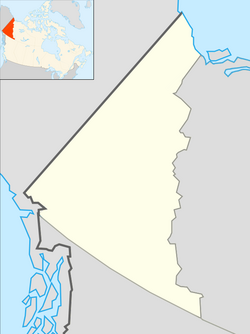| Kaskawulsh Glacier | |
|---|---|
 Kaskawulsh Glacier junction from the air, August 2004 | |
| Type | Valley glacier |
| Location | Canada |
| Coordinates | 60°48′N138°36′W / 60.800°N 138.600°W |
| Length | 78 kilometers (48 mi) |
| Terminus | sealevel |
| Status | retreating |
The Kaskawulsh Glacier is a vast, temperate valley glacier nestled in the Saint Elias Mountains, within Kluane National Park in the Canadian territory of Yukon. [1]



